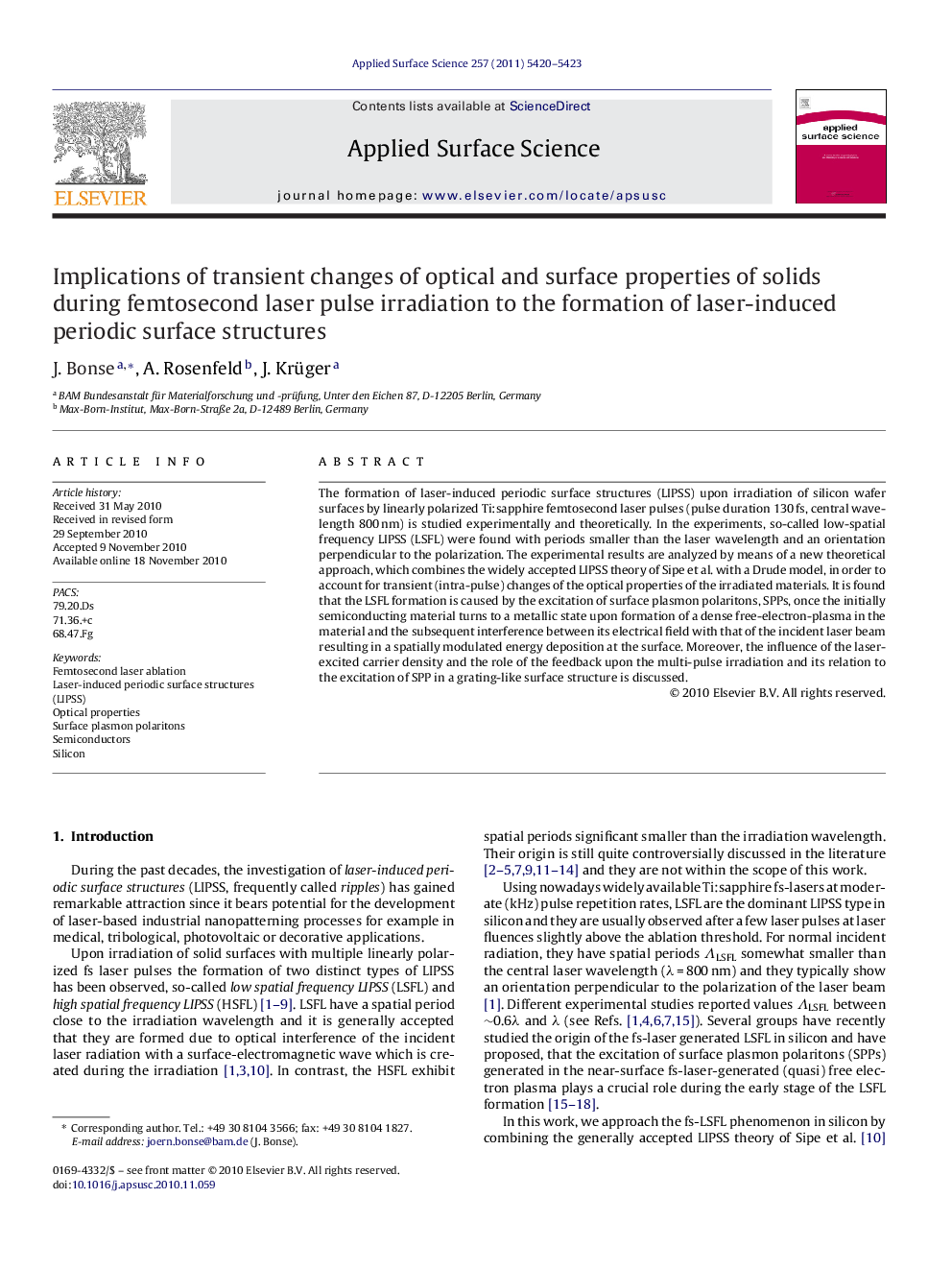| Article ID | Journal | Published Year | Pages | File Type |
|---|---|---|---|---|
| 5364394 | Applied Surface Science | 2011 | 4 Pages |
The formation of laser-induced periodic surface structures (LIPSS) upon irradiation of silicon wafer surfaces by linearly polarized Ti:sapphire femtosecond laser pulses (pulse duration 130Â fs, central wavelength 800Â nm) is studied experimentally and theoretically. In the experiments, so-called low-spatial frequency LIPSS (LSFL) were found with periods smaller than the laser wavelength and an orientation perpendicular to the polarization. The experimental results are analyzed by means of a new theoretical approach, which combines the widely accepted LIPSS theory of Sipe et al. with a Drude model, in order to account for transient (intra-pulse) changes of the optical properties of the irradiated materials. It is found that the LSFL formation is caused by the excitation of surface plasmon polaritons, SPPs, once the initially semiconducting material turns to a metallic state upon formation of a dense free-electron-plasma in the material and the subsequent interference between its electrical field with that of the incident laser beam resulting in a spatially modulated energy deposition at the surface. Moreover, the influence of the laser-excited carrier density and the role of the feedback upon the multi-pulse irradiation and its relation to the excitation of SPP in a grating-like surface structure is discussed.
Graphical abstractDownload full-size imageResearch highlightsⶠFs laser pulses transiently turn the silicon into a metallic state. ⶠLIPSS formation is caused by the interference of the laser pulse with a surface plasmon. ⶠLIPSS affect the energy coupling for subsequent laser pulses during the feedback stage.
